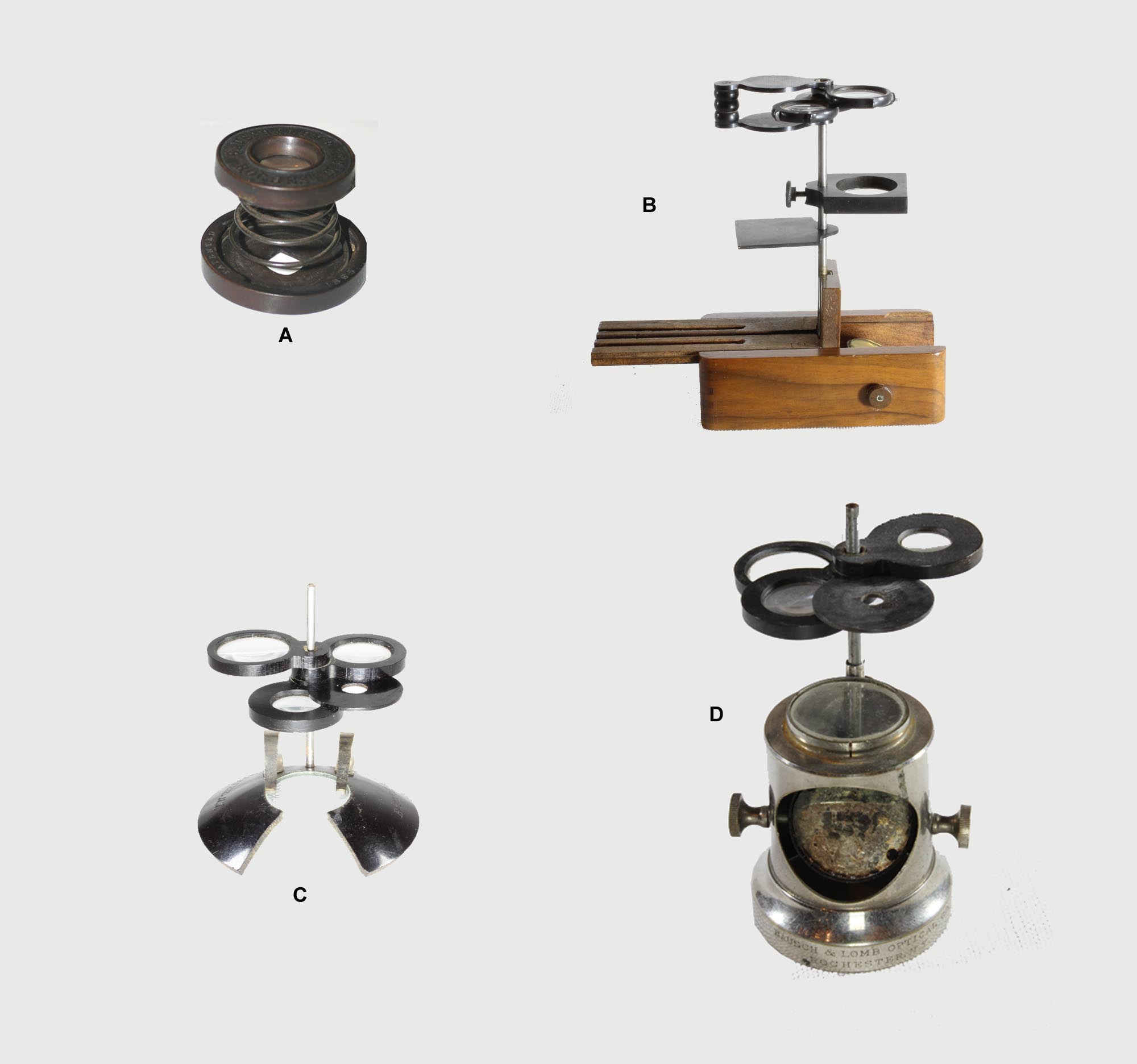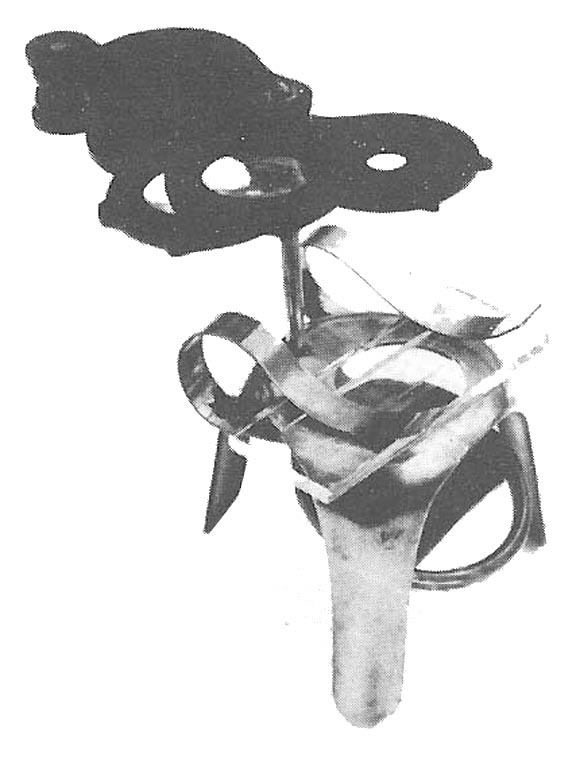| HISTORY | EARLY B & L SIMPLE MICROSCOPES IN THIS COLLECTION |


 At least two other variations of the Agriculturalist were marketed. The one pictured to the left sat on a tiny nickel-plated four-legged table. This is a less commmon version of the four Bausch & Lomb Agriculturalist-types microscopes, and to date, I have seen no documentation of when it was sold, nor for how long. The examples I am aware of had no box with them.
At least two other variations of the Agriculturalist were marketed. The one pictured to the left sat on a tiny nickel-plated four-legged table. This is a less commmon version of the four Bausch & Lomb Agriculturalist-types microscopes, and to date, I have seen no documentation of when it was sold, nor for how long. The examples I am aware of had no box with them.